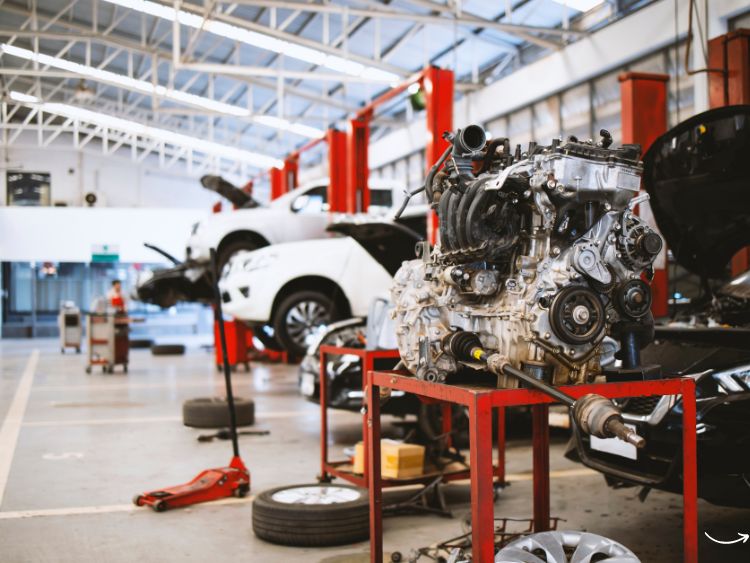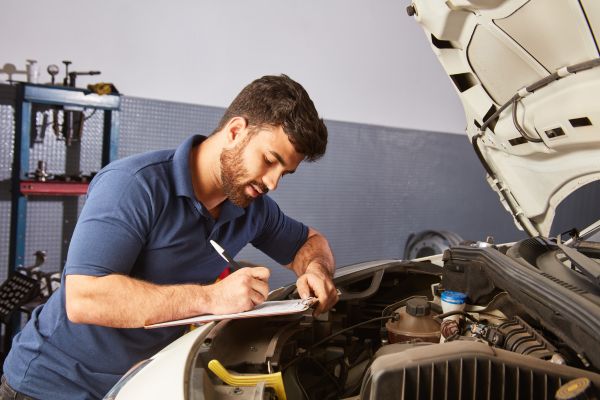Hitting the 100,000-mile mark on your car’s odometer is a significant milestone. It’s a testament to the longevity of your vehicle and your dedication to keeping it on the road. But reaching this milestone doesn’t mean you can kick back and relax; in fact, it’s quite the opposite. As your car ages, regular maintenance becomes even more critical to ensure it continues to run smoothly. So, what does 100,000 mile car maintenance entail, and why is it so crucial? Let’s dive in.
Why Is 100,000 Mile Car Maintenance Important?
Hitting 100,000 miles isn’t just another number—it signifies that your car has been through a lot. Over the years, parts have worn down, fluids have degraded, and the overall condition of the vehicle has changed. While modern cars are built to last, even the most well-engineered machines need a little TLC to keep them running at their best. Regular maintenance at this stage can prevent costly repairs down the road, improve fuel efficiency, and extend the life of your vehicle.
What Does 100,000 Mile Car Maintenance Involve?
**1. Fluid Checks and Changes: Fluids are the lifeblood of your vehicle, keeping everything running smoothly. By the time your car reaches 100,000 miles, it’s essential to check and, if necessary, replace the following fluids:
- Engine Oil: Even if you’ve been diligent about regular oil changes, it’s worth considering a switch to high-mileage oil, which is specially formulated to help protect older engines.
- Transmission Fluid: This fluid tends to degrade over time, leading to shifting issues if not maintained properly.
- Coolant: To prevent your engine from overheating, make sure the coolant is topped up and free from contaminants.
- Brake Fluid: If your brake fluid is dirty or low, it can affect your braking performance, so don’t skip this check.
- Power Steering Fluid: Ensures smooth steering and prevents wear on the steering components.
- Timing Belt and Water Pump Replacement: For many vehicles, the 100,000-mile mark is when manufacturers recommend replacing the timing belt. A broken timing belt can cause significant engine damage, so it’s crucial to replace it before it fails. While you’re at it, it’s a good idea to replace the water pump, as it often requires the same labor to access.
- Tire Inspection and Rotation: Your tires are the only part of the car that touches the road, making them critical to your safety. By 100,000 miles, they’ve likely seen a lot of wear and tear. Check for tread wear, bald spots, or cracks, and rotate them to ensure even wear.
- Brake System Inspection: The brake system is one of the most critical safety features in your car. By 100,000 miles, your brake pads and rotors might need to be replaced. Don’t forget to check the brake lines and hoses for any signs of wear or leaks.
- Suspension and Steering Components: Your car’s suspension and steering systems have taken quite a beating over the years. Components like shocks, struts, and ball joints may need replacing to ensure a smooth and safe ride.
- Battery Check: By 100,000 miles, your car’s battery is likely nearing the end of its life. Regular checks can prevent you from getting stranded due to a dead battery. Consider replacing it if it’s showing signs of weakness.
- Spark Plugs and Ignition System: Spark plugs play a crucial role in the combustion process. Worn-out spark plugs can lead to misfires, poor fuel economy, and even engine damage. The 100,000-mile mark is often the time to replace them, along with any other components in the ignition system that may have worn out.
- Exhaust System Inspection: The exhaust system is vital for directing harmful fumes away from your vehicle and reducing noise. Over time, components like the muffler, catalytic converter, and pipes can corrode or develop leaks. Have them inspected and replaced if necessary.
- Check Engine and Cabin Air Filters: Air filters are essential for maintaining clean air within the engine and the cabin. By this mileage, both the engine air filter and cabin air filter should be inspected and replaced to ensure optimal performance and air quality.
- Hoses and Belts Inspection: Hoses and belts are often overlooked but are critical to your car’s operation. Over time, they can become brittle, crack, or even break. Inspect these components for any signs of wear and replace them as needed.
The Cost of 100,000 Mile Car Maintenance
While 100,000 mile car maintenance may seem like a significant investment, it’s essential to consider it as an investment in your vehicle’s longevity. The cost can vary widely depending on the make and model of your car, as well as the condition it’s in. On average, you might expect to pay anywhere from $500 to $1500 for comprehensive maintenance. However, this is a small price to pay compared to the potential costs of neglecting these vital services.
DIY vs. Professional Maintenance: What’s the Best Approach?
If you’re a car enthusiast with the right tools and knowledge, you might be able to tackle some of these maintenance tasks on your own. Changing the oil, replacing air filters, and even swapping out spark plugs can be done at home with the right guidance. However, more complex tasks like timing belt replacement or suspension work are best left to the professionals. Not only do they have the expertise, but they also have the proper equipment to get the job done safely and correctly.
FAQs About 100,000 Mile Car Maintenance
Q1: Do all cars require the same maintenance at 100,000 miles? A: No, the maintenance required can vary depending on the make, model, and year of your vehicle. Always consult your owner’s manual for specific recommendations.
Q2: Is it worth investing in a car that has over 100,000 miles? A: Absolutely! With proper maintenance, many modern cars can easily surpass 200,000 miles. Just be sure the car has been well-maintained and consider having it inspected by a mechanic before purchasing.
Q3: Can I skip some of these maintenance tasks if my car is running fine? A: Skipping recommended maintenance can lead to bigger problems down the road. Even if your car seems fine, preventive maintenance can save you from costly repairs later on.
Q4: How often should I check my fluids after hitting 100,000 miles? A: It’s a good idea to check your fluids at least every oil change or every 3,000 to 5,000 miles, whichever comes first.
Q5: Should I switch to synthetic oil after 100,000 miles? A: If you haven’t already switched, now might be a good time. Synthetic oil provides better protection for older engines and can help reduce wear and tear.
Summary
Reaching the 100,000-mile milestone is an achievement for both you and your car. But with this milestone comes the responsibility of ensuring your vehicle continues to perform well for many more miles. Regular maintenance is crucial to prevent unexpected breakdowns, improve fuel efficiency, and extend the life of your car. Whether you tackle some tasks yourself or leave it all to the professionals, staying on top of your 100,000 mile car maintenance will pay off in the long run.
Authoritative Links:
- Engine oil information: www.example.com/engine-oil-guide
- Transmission fluid details: www.example.com/transmission-fluid
- Tire maintenance tips: www.example.com/tire-rotation-guide
- Brake system care: www.example.com/brake-maintenance
Maintaining your vehicle at this stage is not just about keeping it running—it’s about preserving the investment you’ve made. With the right care, your car can continue to be a reliable companion for many more miles to come.



